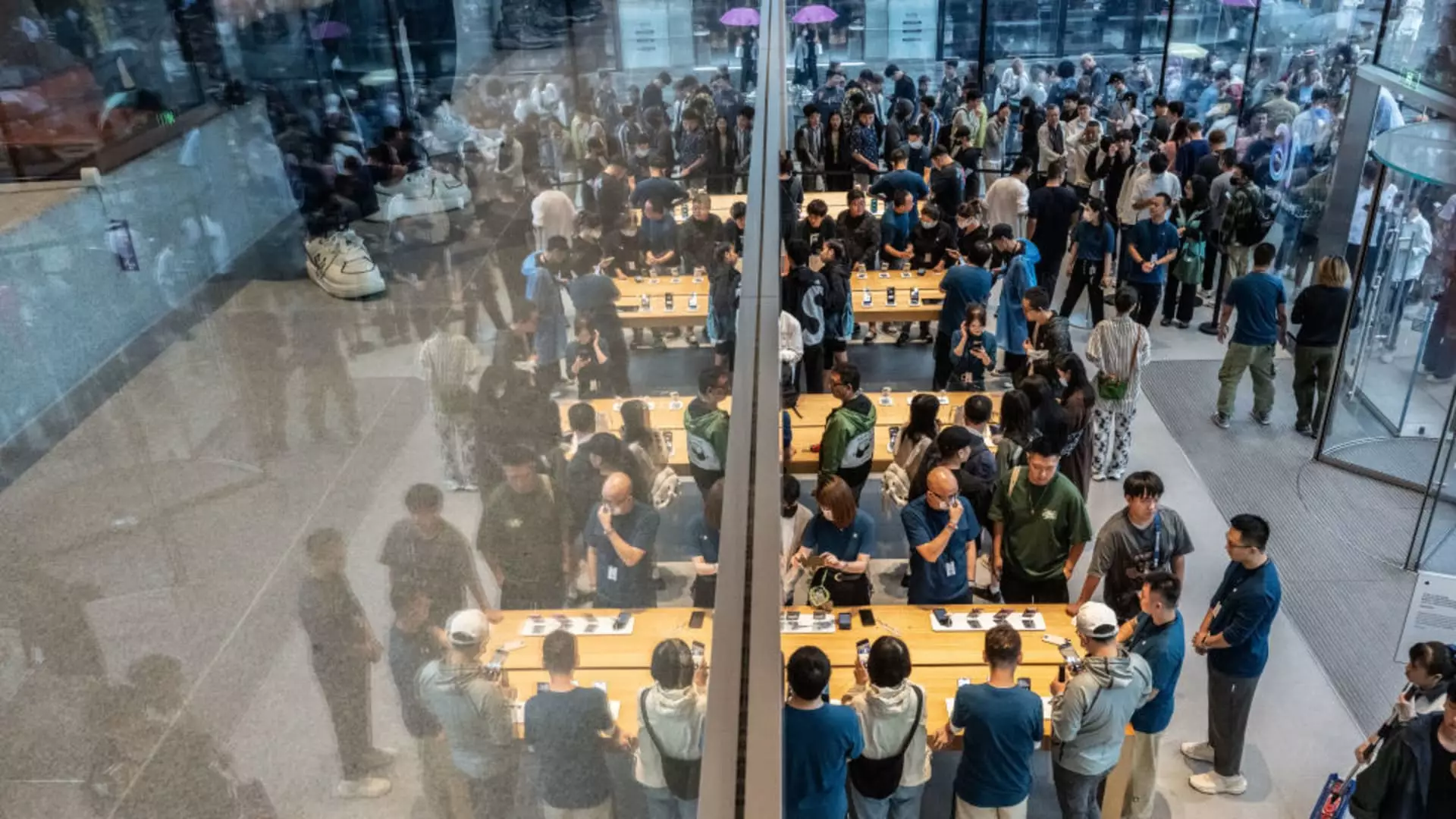The competitive landscape of China’s premium smartphone market has taken a notable turn as consumers exhibit a keen interest in both Apple’s latest iPhone 16 and Huawei’s innovative Mate XT. This trend emerges amidst a backdrop of shifting market dynamics and evolving consumer preferences, driven by an ostensible appetite for new technology despite socio-political setbacks. As both brands launch their flagship devices, the question remains: what drives consumer allegiance in this burgeoning market?
Since the imposition of U.S. sanctions against Huawei in 2019, the Chinese telecommunications giant has faced considerable challenges in maintaining its foothold in the smartphone sector. Prior to these sanctions, Huawei enjoyed remarkable growth, holding a dominant position in the premium smartphone market. However, by the second quarter of 2023, data from Canalys revealed a consequential shift – Huawei’s market share plummeted to fourth position, while Apple mysteriously dropped out of the top five rankings altogether. This unexpected shake-up underscores the impact of geopolitical tensions on business dynamics, as domestic players have claimed the top five spots for the first time in China’s history.
As consumers navigate this rapidly evolving landscape, price continues to be a pivotal factor. The Apple iPhone 16 Pro Max, priced at $1,199, sits at a considerable price point in comparison to Huawei’s Mate XT, which starts at a staggering $2,800. Such a price difference raises questions about value perception among consumers, particularly those who may view higher price tags as a reflection of advanced technology or superior brand prestige.
Despite the financial discrepancy, spot checks conducted by CNBC indicate that a significant percentage of affluent consumers express interest in both flagship models. Among 10 individuals surveyed, eight showed curiosity toward both the iPhone 16 and Huawei’s Mate XT. The intriguing aspect of this finding lies in the profiles of the respondents; these are consumers who have the purchasing power to choose either device, making their preferences indicative of broader market trends.
Furthermore, Huawei aims to bounce back with its Mate XT’s unique trifold design—a feature that presents a radical departure from traditional smartphones. For consumers like a young man named Yang at the Huawei store, experimentation with such innovation is appealing. Despite being an iPhone user, Yang’s venture into the Huawei realm demonstrates a willingness to explore alternatives that may offer technological advancements that Apple has yet to provide.
Moreover, consumer behaviors during product launches also reveal a deeper layer of engagement. Long lines at Apple stores contrasted starkly with the subdued atmosphere surrounding Huawei’s outlets, where customers primarily arrived to test the device or consider resale options rather than engage in passionate purchases. This dichotomy signifies a broader trend where the allure of an innovative concept may outweigh established brand loyalty, if only temporarily.
The resale market further complicates these dynamics, as evidenced by the striking price discrepancies observed between new and secondhand goods on platforms like Xianyu. As buyers explore opportunities to flip devices for profit, the Mate XT’s inflated resale price showcases how exclusivity impacts perceived value. Yang’s strategy of testing the device before making a final commitment indicates a calculated approach driven by financial prudence, exemplifying the mindset of many modern consumers.
The interplay between value and desirability is crucial to understanding consumer motivations in this premium market. With the increase in online platforms dedicated to secondhand goods, consumers now have a voice in setting market dynamics, often prioritizing not just the latest features but also resale potential, which can significantly affect purchase decisions.
As Apple and Huawei unleash their latest flagship phones, the narrative of the premium smartphone market in China is evolving rapidly. While traditional brand allegiances persist, innovation and price sensitivity play increasingly pivotal roles in shaping consumer choices. With potential technological breakthroughs on the horizon and shifting consumer preferences that welcome experimentation, this tug-of-war between Apple and Huawei is likely to intensify.
Ultimately, only time will tell whether established brands can retain their dominance in a landscape increasingly characterized by novelty and competitive pricing. This contemporary saga serves as a fascinating case study of brand loyalty, consumer behavior, and economic shifts shaped by global influences—an interplay that is sure to keep the market alive with competition and innovation for years to come.

